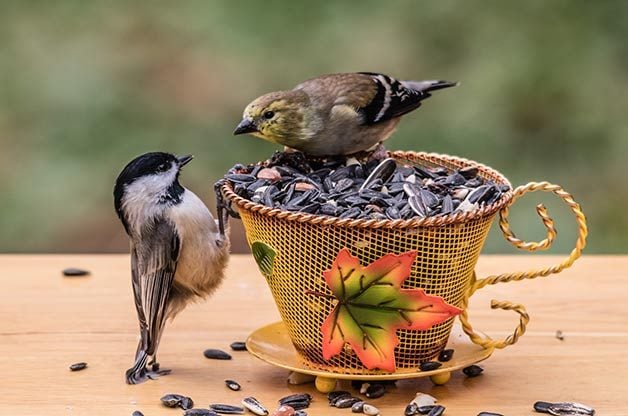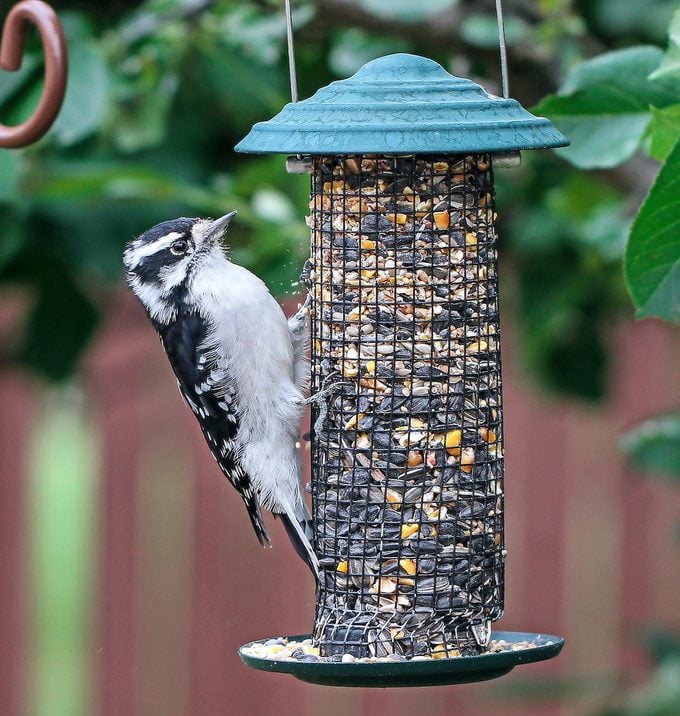Homemade Bird Seed: Tips for DIY Seed Mixes
Updated: Dec. 13, 2022
Save money and make your own homemade birdseed blend to attract more birds, like cardinals and chickadees, to your backyard.
How to Make Your Own Homemade Bird Seed Mix

1. Don’t Attract Unwanted Guests
Inexpensive store-bought seed blends can occasionally attract pesky visitors. They might contain red millet (white proso millet is a better option), wheat or other grain products that are typically used as filler. Avoid those things when creating your own homemade bird seed mix and stick with quality seeds and foods.
2. Do Buy Seed in Bulk
If you know you’re going to use a lot of sunflower seeds or safflower seeds while creating your homemade bird seed mix, buy the supplies in bulk. Big-box stores are great places to stock up and get a decent deal.
3. Don’t Create a Mess
There are certain types of seed that are messier than others. Red millet, for example, often gets tossed to the ground by common songbirds, creating an even bigger mess than usual under your feeders. Even though sparrows, doves and cardinals eat millet, it might be a good idea to skip it when customizing your own birdseed.
Psst—avoid these 9 foods you should never feed to birds.
4. Do Create Fun Shapes
Combine your homemade seed mix with unflavored gelatin and water, spread it on a cookie sheet and let it chill. Then, form it into shapes like wreaths, stars, hearts or whatever cookie cutters you’ve got on hand. Learn how to make your own bird seed ornaments.
5. Do Experiment
Watch the birds at your feeders and take note of what they’re eating or what they’re tossing to the ground. Experiment with different blends and foods from the kitchen. For example, try adding softened raisins or dried cranberries to see if you attract a new species. Eventually, you’ll find a couple of winning combinations that your backyard birds will love.
Discover 10 foods you aren’t feeding birds yet.
Keep Your Seed Mix Fresh
Regardless of whether you make or buy seed, store any bulk mixes in a tightly sealed, cool, dark place.
Reader Share Homemade Bird Seed Tips

Our Birds & Blooms field editors share their no-fail mixes.
“This blend attracts so many birds—cardinals, blue jays, nuthatches, goldfinches and more! I combine safflower seeds, sunflower seeds, thistle, nuts, raisins and lastly, dried cranberries.” — Kathy Lorigan, Easton, Pennsylvania
“I buy cracked corn and black oil sunflower seed in bulk, store it in large plastic containers and then use an auger to mix the two seeds together as we need it. This saves money and we only have to pay for the seed we want to serve the birds.” — Kathy Eppers, Aledo, Texas




















